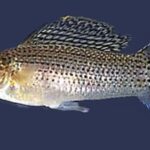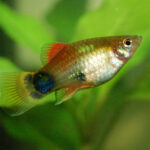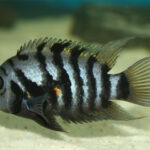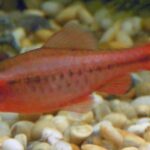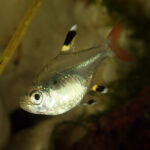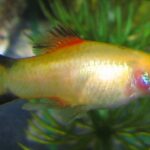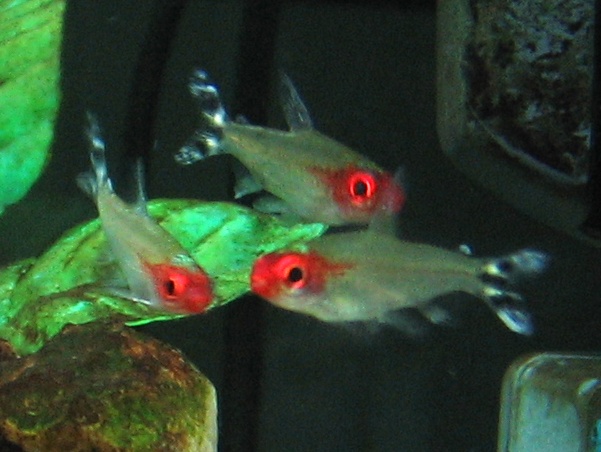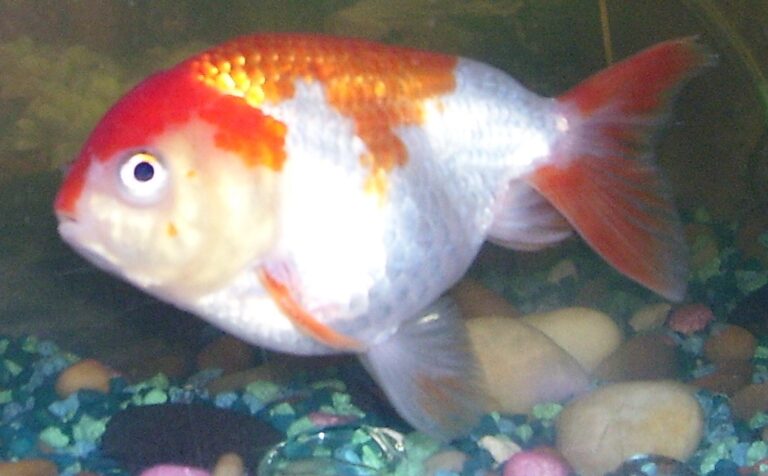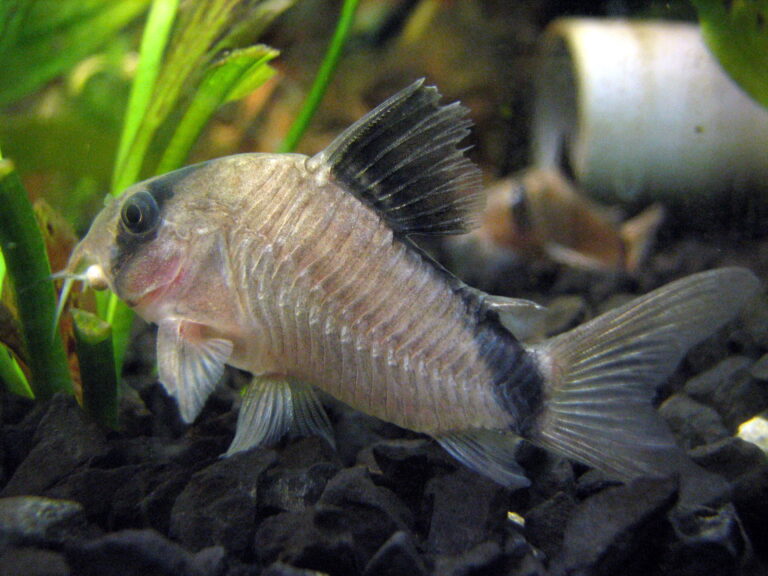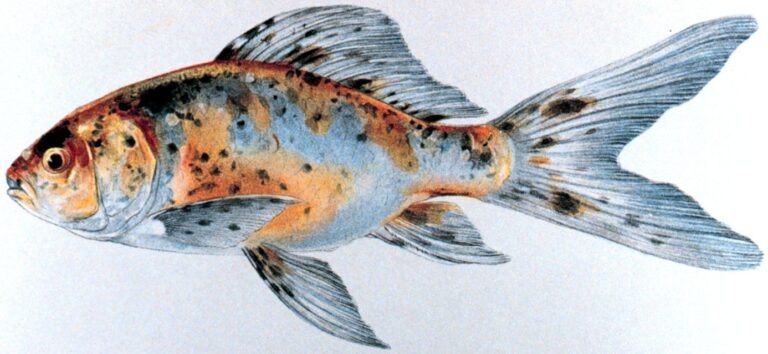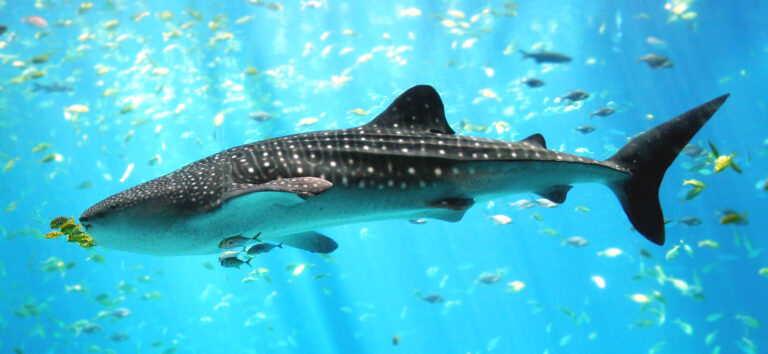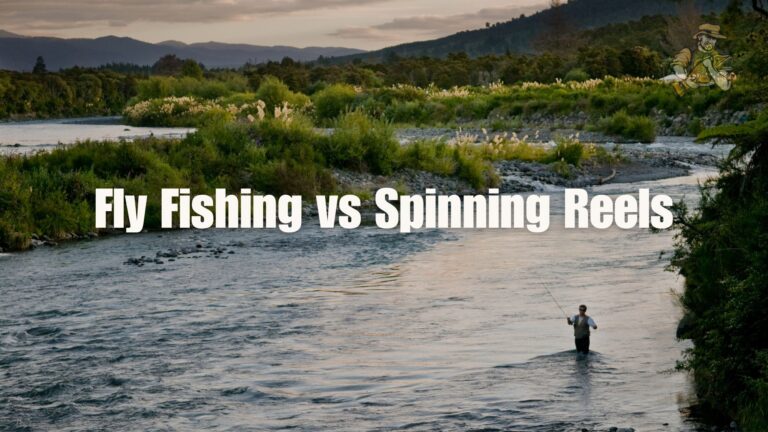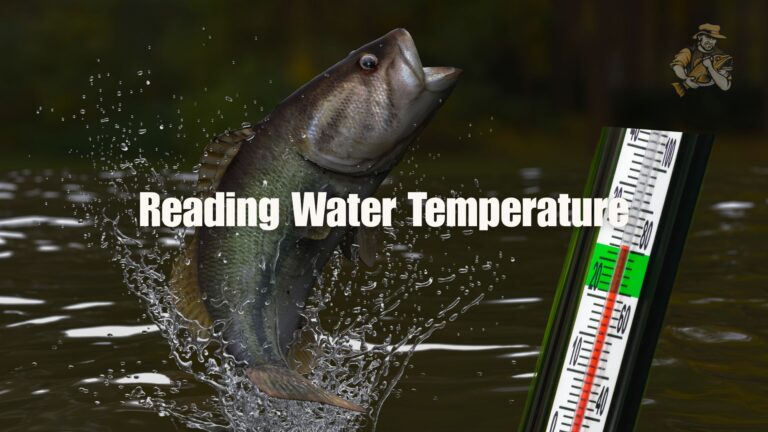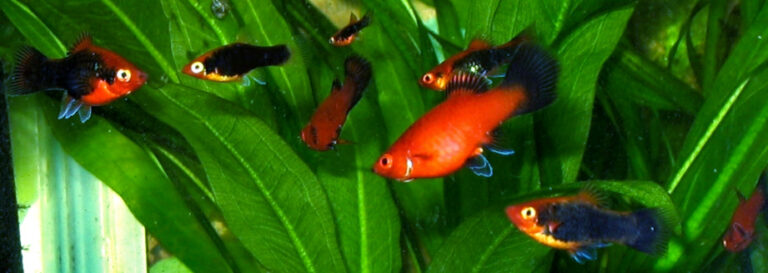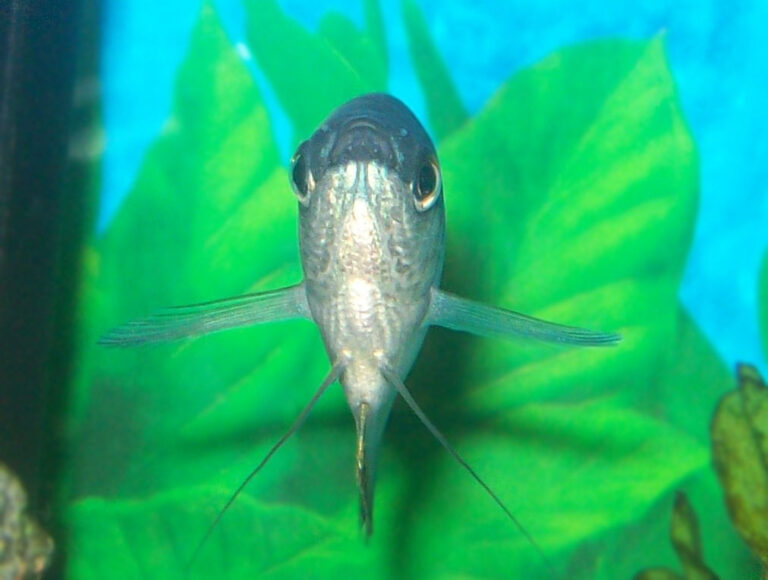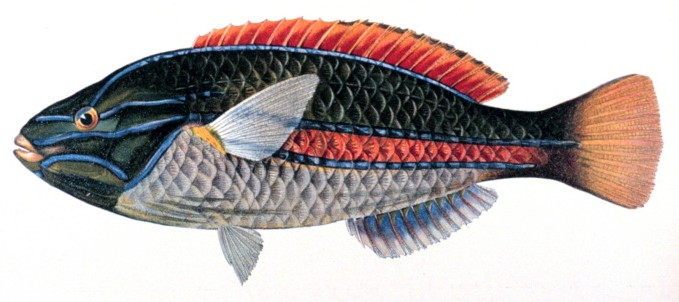Congo Tetra
By Ryan Maron | Last Modified: June 7, 2025
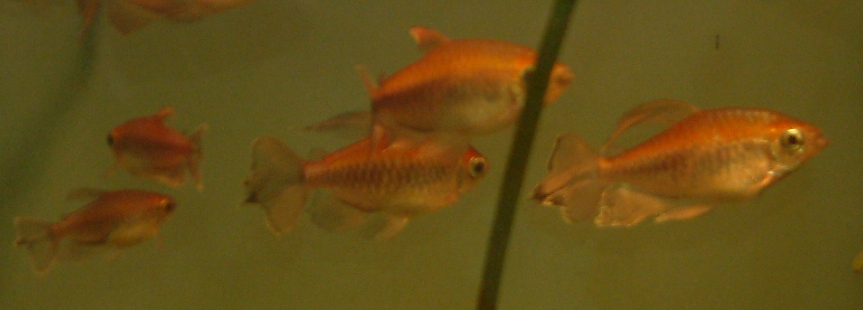
The Congo Tetra stands as one of Africa’s most remarkable freshwater fish species, captivating aquarists and ichthyologists alike with its iridescent beauty and complex behavioral patterns. Known scientifically as Phenacogrammus interruptus, this stunning characin represents the pinnacle of African tetra evolution, displaying remarkable adaptations that have allowed it to thrive in the dynamic river systems of Central Africa. The species plays a crucial ecological role as both predator and prey within its native habitat, serving as an important link in the aquatic food web while contributing to nutrient cycling through its omnivorous feeding habits.
As a flagship species of the Congo River basin, the Congo Tetra demonstrates the incredible biodiversity housed within Africa’s freshwater ecosystems. Its significance extends beyond ecological importance to encompass considerable economic value in the international aquarium trade, where specimens command premium prices due to their striking appearance and relatively peaceful temperament. The species serves as an indicator of ecosystem health within its native range, with population stability often reflecting the overall condition of riparian forests and water quality parameters essential for maintaining balanced aquatic communities.
| Feature | Details |
| Common Name | Congo Tetra |
| Scientific Name | Phenacogrammus interruptus |
| Family | Alestidae |
| Typical Size | 8-10 cm (3-4 inches), 15-25 grams |
| Habitat | Slow-moving rivers and tributaries |
| Diet | Omnivorous – insects, larvae, plant matter |
| Distribution | Congo River Basin, Central Africa |
| Conservation Status | Least Concern |
Taxonomy & Classification
The Congo Tetra belongs to the family Alestidae, a diverse group of African characins that diverged from their South American relatives approximately 100 million years ago during the breakup of Gondwana. This evolutionary separation resulted in distinct morphological and behavioral adaptations that distinguish African tetras from their Neotropical counterparts. The genus Phenacogrammus comprises several closely related species, with P. interruptus serving as the type species and most widely recognized member of this taxonomic group.
Within the broader classification system, the Congo Tetra occupies the order Characiformes, which encompasses over 2,000 species of freshwater fish distributed across Africa and South America. The family Alestidae represents the African branch of this order, containing approximately 120 species arranged across 18 genera. Recent molecular phylogenetic studies have confirmed the monophyly of the Alestidae family while revealing complex evolutionary relationships within the group that continue to inform taxonomic revisions.
The species name “interruptus” refers to the characteristic interrupted lateral line that distinguishes this species from closely related congeners. This taxonomic designation was first established by Boulenger in 1899, based on specimens collected from the Congo River system. Subsequent taxonomic reviews have maintained this classification, though some regional populations display sufficient morphological variation to warrant subspecific recognition in ongoing systematic studies.
Physical Description
The Congo Tetra exhibits remarkable sexual dimorphism, with males displaying significantly more elaborate finnage and coloration than their female counterparts. Adult males typically reach lengths of 8-10 centimeters, featuring elongated dorsal and anal fins that create flowing, ribbon-like extensions. The most striking characteristic involves the caudal fin, which develops pronounced upper and lower lobes separated by a distinctive gap that gives the tail a lyre-shaped appearance in mature specimens.
Coloration represents perhaps the most captivating aspect of Congo Tetra morphology, with healthy specimens displaying an iridescent spectrum that shifts from blue-green to golden-orange depending on lighting conditions and viewing angle. The body exhibits a compressed, laterally flattened profile typical of mid-water schooling species, with a relatively large eye adapted for detecting both prey items and potential predators in the dappled light conditions of their forest stream habitat.
Females demonstrate more subdued coloration and finnage, typically reaching slightly smaller adult sizes of 7-8 centimeters. Their fins remain proportionally shorter and more rounded, while their body coloration tends toward silver-blue with subtle golden highlights. Both sexes possess the characteristic adipose fin common to characiform fishes, along with a complete lateral line system that extends from the operculum to the caudal peduncle, though this line may appear interrupted or discontinuous in some individuals.
The scales of Congo Tetra are cycloid in structure, creating the smooth texture that contributes to their hydrodynamic efficiency. Mature specimens typically display between 32-36 scales along the lateral line, with scale patterns serving as important diagnostic features for species identification and population studies within their native range.
Habitat & Distribution
The Congo Tetra inhabits the vast Congo River basin, which encompasses portions of the Democratic Republic of Congo, Central African Republic, Cameroon, and Equatorial Guinea. This massive watershed system covers approximately 4 million square kilometers, making it the second-largest river basin in the world by discharge volume. Within this expansive system, Congo Tetras demonstrate a preference for slow-moving tributaries and backwater areas characterized by soft, acidic water conditions and dense riparian vegetation.
Native populations typically occupy waters with temperatures ranging from 24-28°C (75-82°F), pH levels between 6.0-7.0, and very low mineral content resulting in soft water conditions. These parameters reflect the influence of extensive tropical rainforest cover that filters surface runoff and contributes significant amounts of dissolved organic compounds, creating the tea-colored water characteristic of many Amazonian and African river systems.
The species shows particular affinity for areas with overhanging vegetation and submerged woody debris, which provide both foraging opportunities and protection from aerial predators. During seasonal flooding cycles, Congo Tetras often migrate into temporary floodplain habitats where they access rich feeding grounds and suitable spawning areas. These flood pulse dynamics play crucial roles in the species’ reproductive cycle and population maintenance within the broader ecosystem.
Current distribution patterns suggest that Congo Tetra populations remain stable throughout most of their historical range, though localized declines have been documented in areas experiencing intensive human development or mining activities. The species demonstrates considerable tolerance for environmental variation, contributing to its successful establishment in aquaculture facilities and naturalized populations in some regions outside its native range.
Diet & Feeding Behavior
Congo Tetras exhibit omnivorous feeding behavior that reflects their opportunistic nature and adaptability to varying seasonal food availability. Their diet consists primarily of small invertebrates, including aquatic insect larvae, microcrustaceans, and terrestrial insects that fall onto the water surface. During periods of high water, they supplement this protein-rich fare with plant material such as algae, small seeds, and decomposing organic matter that becomes available in flooded forest areas.
Feeding activity typically peaks during dawn and dusk periods when many prey species become most active, though Congo Tetras will opportunistically feed throughout the day when suitable food items become available. Their feeding strategy involves both active pursuit of mobile prey and methodical gleaning of food particles from plant surfaces and submerged structures. The species demonstrates remarkable feeding plasticity, adjusting their foraging behavior based on current availability and seasonal abundance patterns.
The digestive system of Congo Tetras features adaptations consistent with their omnivorous lifestyle, including a relatively short intestinal tract that efficiently processes both animal and plant material. Their pharyngeal teeth arrangement allows for effective processing of various food types, from soft invertebrate prey to tougher plant materials. This dietary flexibility contributes significantly to their ecological success and adaptability to changing environmental conditions.
Schooling behavior plays an important role in feeding efficiency, with groups of Congo Tetras often coordinating their foraging activities to maximize food discovery and minimize individual predation risk. Larger schools demonstrate enhanced ability to locate and exploit temporary food resources, while also providing opportunities for social learning regarding optimal foraging strategies. This collective feeding behavior represents a key adaptation that has contributed to the species’ evolutionary success in dynamic river environments.
Behavior & Adaptations
Congo Tetras demonstrate sophisticated schooling behavior that serves multiple adaptive functions within their natural habitat. Schools typically consist of 20-50 individuals, though congregation sizes can reach several hundred during seasonal migrations or when concentrated food resources become available. Within these aggregations, fish maintain precise spatial relationships that optimize both hydrodynamic efficiency and collective vigilance against potential predators.
The species exhibits distinct diurnal activity patterns, with peak activity occurring during crepuscular periods when light levels create optimal feeding conditions. During bright daylight hours, schools often seek cover beneath overhanging vegetation or within submerged root systems, emerging into open water as light levels diminish. This behavioral pattern reflects both predator avoidance strategies and the activity cycles of their preferred prey species.
Territorial behavior becomes most pronounced during spawning periods, when mature males establish temporary breeding territories in areas with suitable substrate and water flow characteristics. Males display elaborate courtship behaviors including fin spreading, color intensification, and ritualized swimming patterns designed to attract females and deter competing males. These territorial displays represent significant energy investments that directly correlate with reproductive success.
Congo Tetras possess well-developed lateral line systems that enable detection of water movement and pressure changes associated with both predators and prey. This sensory adaptation proves particularly valuable in the low-visibility conditions common to their forest stream habitats, where visual cues may be limited. The species also demonstrates remarkable jumping ability, frequently observed leaping from the water to escape predators or pursue aerial prey items.
Stress responses in Congo Tetras include rapid color changes, schooling tightening, and increased gill ventilation rates. These physiological and behavioral adaptations allow the species to respond quickly to environmental challenges while maintaining group cohesion essential for survival in predator-rich environments.
Reproduction & Life Cycle
Congo Tetra reproduction follows seasonal patterns closely tied to annual flood cycles within the Congo River basin. Spawning typically occurs during the rainy season when rising water levels provide access to flooded forest areas that offer optimal conditions for egg development and fry survival. Water temperature increases and changes in photoperiod serve as primary environmental cues triggering reproductive readiness in mature individuals.
Sexual maturity occurs at approximately 12-18 months of age, with males developing their characteristic extended finnage and intensified coloration as they approach breeding condition. Females reach sexual maturity slightly earlier and can be identified by their more rounded body profile and enlarged abdomen when carrying eggs. Mature females can produce between 300-500 eggs per spawning event, with larger individuals demonstrating correspondingly higher fecundity rates.
The spawning process involves elaborate courtship rituals where males establish temporary territories and display to attract receptive females. Males demonstrate their fitness through vigorous swimming displays, fin spreading, and color intensification that can last several hours. Once a female accepts a male’s advances, the pair engages in synchronized swimming patterns that culminate in simultaneous release of eggs and sperm in areas with suitable substrate, often among fine-leaved plants or root systems.
Eggs are adhesive and attach to vegetation or other surfaces where they develop over a period of 5-7 days, depending on water temperature. The larval stage lasts approximately 2-3 weeks, during which developing fry absorb their yolk sacs and begin feeding on microscopic organisms. Juvenile Congo Tetras form distinct aggregations separate from adult schools, gradually integrating into mixed-age groups as they mature and develop the swimming capabilities necessary for full participation in adult schooling behavior.
Parental care is minimal in Congo Tetras, with adults providing no direct protection or provisioning for their offspring. This reproductive strategy relies on high fecundity and suitable habitat conditions to ensure sufficient numbers of juveniles survive to maintain population levels. The species’ reproductive success closely correlates with the availability of appropriate spawning habitat and the timing of seasonal flood cycles that provide crucial nursery areas for developing fry.
Predators & Threats
Congo Tetras face predation pressure from numerous species throughout their life cycle, with threat levels varying significantly between juvenile and adult life stages. Larval and juvenile stages experience the highest mortality rates, falling prey to aquatic invertebrates, small fish species, and even adult Congo Tetras in some circumstances. Primary predators of juvenile Congo Tetras include cichlid species, catfish, and various members of the characiform community that inhabit similar ecological niches.
Adult Congo Tetras must contend with larger predatory fish including African tigerfish (Hydrocynus species), large cichlids, and various catfish species that actively hunt schooling prey. Aerial predators such as kingfishers, herons, and other piscivorous birds also exert significant predation pressure, particularly in shallow areas where Congo Tetras may be feeding or seeking shelter. The species’ schooling behavior represents their primary defense mechanism against these diverse predatory threats.
Human activities pose increasingly significant threats to Congo Tetra populations throughout their native range. Deforestation within the Congo River watershed has led to increased sedimentation, altered water chemistry, and loss of critical spawning habitat in seasonally flooded forest areas. Mining operations, particularly those targeting minerals such as coltan and gold, introduce heavy metals and other pollutants that can bioaccumulate in fish tissues and disrupt reproductive processes.
Overfishing for the international aquarium trade has impacted some local populations, though the species’ wide distribution and high reproductive capacity generally buffer against severe population declines. However, collection pressure combined with habitat degradation can create cumulative impacts that may threaten regional population stability. Climate change represents an emerging threat that could alter precipitation patterns and flood cycles essential for successful reproduction.
Water pollution from agricultural runoff, urban development, and industrial activities continues to degrade water quality throughout portions of the Congo River system. These pollutants can affect Congo Tetra health, reproduction, and survival either directly through toxicity or indirectly through impacts on food webs and habitat quality. The species’ position as both predator and prey makes them particularly vulnerable to bioaccumulation of persistent pollutants that concentrate as they move through aquatic food webs.
Conservation Status
The International Union for Conservation of Nature (IUCN) currently lists the Congo Tetra as Least Concern, reflecting the species’ wide distribution, stable population trends, and adaptability to environmental variation. This classification indicates that the species does not face immediate risk of extinction at the global scale, though localized populations may experience varying degrees of pressure from human activities and environmental changes.
Population assessments conducted throughout the species’ range suggest that Congo Tetras remain abundant in most areas with suitable habitat conditions. Their reproductive strategy, characterized by high fecundity and broad environmental tolerance, provides resilience against moderate levels of environmental disturbance. Additionally, the species’ schooling behavior and omnivorous diet contribute to population stability by enhancing survival rates and reducing competition for specialized resources.
However, conservation biologists emphasize the importance of monitoring trends in habitat quality and population demographics, particularly in regions experiencing rapid development or resource extraction activities. The Congo River basin faces increasing pressure from human activities, and species currently classified as stable may experience future declines if current degradation trends continue unchecked.
Conservation efforts targeting Congo Tetra populations primarily focus on habitat protection and restoration within the broader context of Congo River basin ecosystem management. International conservation organizations work with local governments and communities to establish protected areas, implement sustainable fishing practices, and reduce pollution inputs from industrial and agricultural sources. These ecosystem-level approaches provide the most effective long-term conservation strategy for Congo Tetras and the hundreds of other species that depend on healthy river systems.
The species’ importance in the international aquarium trade has led to development of sustainable collection practices and captive breeding programs that reduce pressure on wild populations. Several aquaculture facilities now produce Congo Tetras commercially, helping to meet market demand while supporting conservation goals through reduced collection pressure on native populations.
Human Interaction
Congo Tetras have maintained significant cultural importance among indigenous communities throughout the Congo River basin for centuries, serving as both food source and subjects of traditional fishing practices. Local fishing methods often target schooling species like Congo Tetras using traditional nets, traps, and other sustainable techniques that minimize ecological impact while providing essential protein for rural communities. These traditional practices represent important cultural knowledge systems that integrate ecological understanding with subsistence needs.
The international aquarium trade represents the most significant form of modern human interaction with Congo Tetra populations. First introduced to the aquarium hobby in the 1960s, the species quickly gained popularity due to its striking appearance and relatively peaceful temperament. Today, Congo Tetras command premium prices in the aquarium trade, with high-quality specimens often selling for 20-30 times the price of more common tetra fish varieties in the international market.
Commercial breeding operations have developed sophisticated techniques for reproducing Congo Tetras in captivity, though wild-caught specimens still comprise a significant portion of the trade due to superior coloration and finnage quality. These breeding programs have contributed valuable knowledge regarding the species’ reproductive biology, nutritional requirements, and environmental preferences that benefit both commercial and conservation applications.
Scientific research on Congo Tetras has provided important insights into African fish evolution, schooling behavior, and ecological adaptations to tropical river systems. The species serves as a model organism for studies of sexual selection, social behavior, and environmental adaptation in characiform fishes. Research findings have applications for understanding broader patterns of biodiversity and evolution within African freshwater ecosystems.
Educational programs in zoos, public aquariums, and research institutions frequently feature Congo Tetras as representatives of African freshwater biodiversity. Their attractive appearance and interesting behaviors make them excellent ambassadors for conservation awareness and education about the importance of protecting tropical river ecosystems. These educational applications help build public support for conservation initiatives and sustainable resource management practices.
Interesting Facts
Congo Tetras possess the remarkable ability to change their coloration rapidly in response to environmental conditions, social interactions, and emotional states. This color-changing capability involves specialized cells called chromatophores that contain different pigments and can expand or contract to alter the fish’s appearance within seconds. Dominant males often display the most intense coloration, while stressed or subordinate individuals may appear significantly paler.
The species demonstrates sophisticated social learning behaviors that allow them to acquire information about food sources, predator threats, and environmental conditions from other school members. Young Congo Tetras learn optimal foraging strategies, predator recognition, and social behaviors through observation and interaction with experienced individuals, creating cultural transmission of survival knowledge within populations.
Congo Tetras can live for up to 5-8 years in optimal conditions, making them relatively long-lived compared to many other tetra species. This longevity allows individuals to accumulate significant experience and social knowledge that benefits both themselves and their school mates. Older individuals often serve as leaders in schooling groups, influencing movement patterns and decision-making processes.
The species exhibits fascinating sleep-like behaviors where they become motionless and less responsive to stimuli during nighttime periods. During these rest phases, Congo Tetras often position themselves vertically in the water column or rest against vegetation, suggesting they experience periods of reduced consciousness similar to sleep in higher vertebrates.
Congo Tetras possess excellent memories and can recognize individual school members, preferred feeding locations, and familiar territory boundaries. This cognitive capability enables them to navigate complex social hierarchies within schools and optimize their use of available resources through learned associations between environmental cues and resource availability.
The species can survive in water with oxygen levels as low as 3-4 parts per million, an adaptation that allows them to inhabit areas with decomposing organic matter and high biological oxygen demand. This tolerance contributes to their ability to exploit feeding opportunities in heavily vegetated areas where other species might struggle with reduced oxygen availability.
Frequently Asked Questions
How large do Congo Tetras grow in captivity compared to their wild counterparts?
Captive Congo Tetras typically reach similar sizes to wild specimens, with males growing 8-10 cm (3-4 inches) and females slightly smaller at 7-8 cm. However, captive specimens may not develop the same intensity of coloration or extensive finnage seen in wild fish due to differences in diet, water chemistry, and environmental stimulation. Optimal aquarium conditions including varied diet, appropriate water parameters, and adequate space can help captive fish achieve their full growth potential.
What water conditions are essential for maintaining healthy Congo Tetras?
Congo Tetras thrive in soft, slightly acidic water with pH levels between 6.0-7.0 and very low mineral content. Water temperature should remain stable between 24-28°C (75-82°F), with good filtration to maintain water quality while avoiding strong currents that can stress these peaceful fish. Regular water changes and the addition of driftwood or peat filtration can help maintain the natural conditions they prefer.
Can Congo Tetras be kept with other African fish species?
Congo Tetras generally coexist well with other peaceful African species of similar size and temperament. Compatible tank mates include other members of the Alestidae family, peaceful African cichlids, and various catfish species from the same geographic region. However, they should not be housed with aggressive species or those large enough to consider them prey, as their peaceful nature makes them vulnerable to bullying or predation.
How can aquarists distinguish between male and female Congo Tetras?
Male Congo Tetras display significantly more elaborate finnage with extended dorsal and anal fins, plus the characteristic lyre-shaped caudal fin in mature specimens. Males also exhibit more intense coloration with vivid iridescent hues, while females remain smaller with more subdued silver-blue coloration and proportionally shorter, rounded fins. During breeding condition, females develop a noticeably rounded abdomen when carrying eggs.
Conclusion
The Congo Tetra represents a remarkable example of evolutionary adaptation and ecological success within Africa’s complex freshwater ecosystems. As both a keystone species in their native habitat and an ambassador for African biodiversity in the global aquarium trade, these magnificent fish continue to captivate scientists and enthusiasts while highlighting the critical importance of Congo River basin conservation. Their resilience and adaptability offer hope for continued survival, provided that human activities can be managed sustainably to preserve the pristine aquatic habitats upon which they depend.
Share The Article:
More Fish Species:
-
Rummy Nose Tetra
The Rummy Nose Tetra stands as one of the most distinctive and recognizable small freshwater fish species in South…
-
Bigeye Thresher Shark
The Bigeye Thresher Shark represents one of the ocean’s most extraordinary predators, distinguished by its dramatically elongated tail fin…
-
Tiger Barb
The Tiger Barb (Puntigrus tetrazona) stands as one of Southeast Asia’s most recognizable freshwater cyprinids, distinguished by its vibrant…
-
Lionhead Goldfish
The Lionhead Goldfish represents one of the most distinctive and cherished ornamental varieties within the goldfish family, captivating aquarists…
-
Corydoras Catfish
Corydoras catfish represent one of the most diverse and ecologically significant groups of freshwater bottom-dwelling fish in South American…
-
Shubunkin Goldfish
The Shubunkin Goldfish (Carassius auratus) represents one of the most popular and visually striking varieties of goldfish kept in…
Discover
-
River Fishing Techniques: Master the Moving Water
Fishing rivers presents a unique set of challenges and rewards that I’ve come to appreciate over my three decades…
-
Whale Shark
The whale shark (*Rhincodon typus*) stands as the ocean’s largest fish species, representing one of nature’s most remarkable gentle…
-
Banana Fishing Myths Busted: The Truth Behind Fishing’s Strangest Superstition
Ask any hardcore angler about bringing a banana on their boat, and you might get a reaction stronger than…
-
Caribbean Inshore Fishing: Bonefish and Permit Tactics
There’s something almost magical about stalking the shallow flats of the Caribbean. I still remember my first bonefish –…
-
Fly Fishing vs Spinning Reels: Choosing the Right Technique
If there’s one debate that never seems to end in fishing circles, it’s fly fishing versus spinning gear. I’ve…
-
Reading Water Temperature: Seasonal Cues for Better Fishing
I’ve spent more mornings than I can count staring at a thermometer clipped to my fishing line, watching those…
Discover
-
Best Fishing Spots in California: Lakes, Rivers, and Coastal Hotspots
California fishing has always struck me as a study in beautiful contradictions. From snow-fed alpine lakes to sweltering desert…
-
Mastering Fishing Casting Techniques: Complete Guide
Have you ever watched someone cast their line with perfect precision while you struggle to avoid tangling yours in…
-
Southern Platyfish
The Southern Platyfish, scientifically known as *Xiphophorus maculatus*, represents one of the most significant freshwater fish species in both…
-
Blue Gourami
The Blue Gourami (*Trichogaster trichopterus*) stands as one of the most recognizable and adaptable freshwater fish species in tropical…
-
Green Swordtail
The Green Swordtail (Xiphophorus hellerii) represents one of the most recognizable and ecologically significant freshwater fish species in both…
-
Rainbowfish
Rainbowfish represent one of the most visually striking and ecologically significant groups of freshwater fish found across Australia, New…


